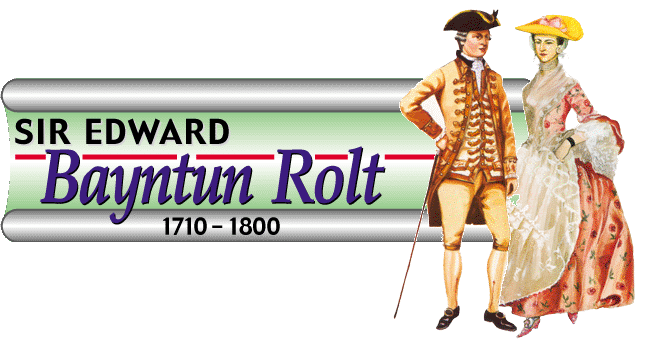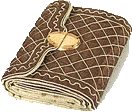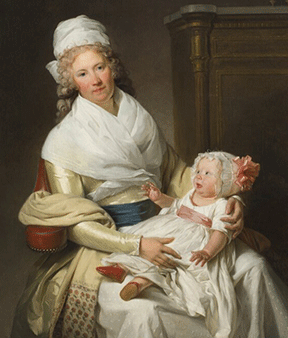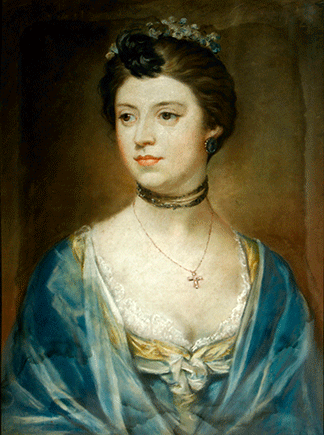
 Timeline 1714: Queen Anne died from a blood disease on 1st August at Kensington Palace, after serving as Queen for 12 years. She was the last of the Stuarts and was buried at Westminster Abbey, Middlesex. The 54 year old, George I, ascended to the throne under the terms of the 1701 Act of Settlement. He was the son of Ernest Augustus, Elector of Hanover and was crowned king on 18th September at Westminster Abbey, Middlesex. However George I never spoke English and spent the best part of his reign in Hanover. 1727: After 23 years as King, George I suffered a stroke and died at the age of 67 on 11th June in Hanover, in the same room in which he was born. His only son, George II succeeded him as King of England. George II was 30 years old when he ascended to the throne and was crowned king on 4th October at Westminster Abbey, Middlesex. 1737: Queen Caroline, the wife of King George II died and as a result the King never visited Hampton Court Palace again with the full court. 1739: England at war with Spain and France. 1743: King George II commanded his army against the French at Dettingen – the last British sovereign to command troops in the battlefield. 1745: The Jacobite Rebellion – Bonnie Prince Charlie (Charles Edward Stuart, the grandson of the deposed King James II of England and James VII of Scotland and son of James Stuart, the Old Pretender) marched south in an attempt to put his father on the throne. He landed in Scotland with a handful of men, gathered an army and invaded England, but he was forced to retreat to Scotland and his followers suffered a terrible defeat by the English at Culloden in April and Bonnie Prince Charlie became a fugitive.  |
Edward Rolt was born in 1710 at Sacombe Park, in Hertfordshire and inherited the title Lord of the Manor of Bromham, following the death of his uncle, John Bayntun, in 1716. He was the second son of Edward Rolt and Anne Bayntun. Anne's brother, John Bayntun, was the last of the direct male line of Bayntun descendants and although he was married, he had no children of his own. When he died his sister, Anne, was named heiress to his estate, but as was customary in those days, his nephew, Edward Rolt, inherited the title Lord of the Manor of Bromham. This was deemed fair as his older brother, Thomas, would inherit his father's Sacombe Park estate. After John's death, the Rolt family moved into the Bayntun mansion – Spye Park House. Edward Rolt's father died in 1722 and his mother Anne, later remarried James, 13th Lord Somerville and went to live at his estate at Drum, Renfrew on the outskirts of Glasgow. She is reported to have died there in 1734 and Edward Rolt, at this time, inherited the remainder of the Bayntun estate. It was estimated the estate was worth nearly £3,000 a year at the time of his mother's death. For everyday use Edward dropped the name Rolt from his name and was generally known as Edward Bayntun, or Ned to his friends. He was considerate, a good business man and interested in his estate. In the earlier years his involvement in politics meant he had to live in London, but he was devoted to his family of 6 children who resided with their mother. He kept a diary for over 50 years and some of the volumes are now housed at the Starky private family museum at Brackenfield, in New Zealand. His entries provide us with a wonderful insight into life in the 18th century – his political career, his travels and the problems he faced with his family, in particular his daughters. Edward Bayntun Rolt first entered politics when he won a by-election and went on to become M.P. for Chippenham for 43 years, from 1737-1780 - where the Bayntun's held various properties and he was made Groom of the Bedchamber to Frederick, the Prince of Wales in 1745 and upon the death of Lord Baltimore, he was made Surveyor of the Duchy of Cornwall 1745-46 and Surveyor General to the Duchy of Cornwall from 1751-1796, a post he held for 45 years. Sometime in the 1730's Mary Poynter became Edward's mistress and by 1750 she bore him six children. Up until 1752 marriage by custom and repute was legal marriage in England. However in 1752 this was abolished and children whose parents had not been married in church were illegitimate and deemed not to have parents. So Mary, Edward, Anne, Henry, John and Lucy would be considered illegitimate. Imagine young Edward's feelings when he, as the eldest son, learned he would not inherit his father's baronetcy or estates. In 1731, Edward who was heir to his mother's estate at Spye Park, became of age and as the fortune he then possessed was not adequate to his situation and expectancies, he entered into a Treaty with Lord Somerville for an increase of his income. They settled the matter on the following terms – Lord Somerville agreed to allow Edward £500 per annum, for as long as his mother should live, on condition that he should, after her death, pay to Lord Somerville and his heirs, the annual sum of £300 during his own life. As his mother, Anne, was then not above 42 years of age, this appeared to have been an equitable bargain. But three years later she died and Lord Somerville came to Bromham to bury her and to settle her estate on Edward.
In an Act of Parliament in 1742-1743, Edward used the Enmore estates to raise money to pay off some death duties for another member of the family. At first he sold off the old Malet Castle/Great House and a Mill in Enmore, which were bought indirectly by John Perceval, the Earl of Egmont. Nearly all of the Enmore estate was sold shortly after this time and Perceval bought most of it. At this time, he and his family lived in London during his term in Parliament, although they lived separately. Mary Poynter and his children resided at a house in Marylebone near London and Mary's sister, Ann Poynter, shared the house with them and helped her with the children. They were frequent visitors to Spye Park, where they were acknowledged as Edward's family. In later years he resided at Arlington Street while in London. In 1747, and again in 1754, he received £800 from secret service funds towards his election expenses and in 1761, when no Government money was issued for elections, John Stuart Bute, Privy Councilor, First Gentleman of the Bedchamber and Secretary of State, arranged for him a pension of £300 p.a. on the Duchy of Cornwall. He altered and modernised the existing house at Spye Park into a Georgian manor some time in 1749. The whole front of the house above the sunken storey was completely altered and a massive portico added. This included a magnificent triangular shaped concrete structure at roof level with eight concrete pillars towering above the entrance. But this transformation into a Georgian manor was not just restricted to the outside of the building. He also added a fine upstairs drawing room with a marvelous view on the south or prospect side of the house. This will be remembered as the handsomest room in the house and projected from the older part of the mansion. An interesting curse was directed at Edward when he was altering his house at Spye Park. One woman was so annoyed, she cursed: "You will die in your own bed, but your house will be destroyed and your descendants will be scattered all over the earth" - her curse did eventually come through. By 1750, his three sons - Edward, John and Henry - all attended school near Bromham. In 1751 Edward also sold the Manor of Enmore to John Perceval, the Earl of Egmont, although for the next three years Perceval allowed him the right to add lives to certain leaseholds and to take reversionary leases on some of his former lands but soon all his interests had gone. The Manor of Enmore had been inherited by his grandmother, Lady Anne Wilmot and was in her family since 1166. It descended, along with the Manor of Bromham and the many other Bayntun owned properties, to Edward. In the years that followed, Perceval built a new house known as Enmore Castle to his own design. Edward and Mary Poynter got married in secret on 15th January 1751 at Shoreham in Kent and went on to have three more children – Constantia, Andrew and Elizabeth. They managed to keep their marriage a secret until the birth of Andrew on the 28th September 1755. Secret marriages like this were soon prevented by the Marriage Act of 1753. Andrew was christened Bayntun Rolt to distinguish him from his illegitimate brothers and sisters, who were all christened Bayntun. Constantia was also christened Bayntun Rolt but was baptised in London to prevent Edward's brother, John, from knowing she was legitimate. Elizabeth was born three years after Andrew in 1758 and baptised at Bromham. Because his father was now legally married, Andrew would be the rightful heir to the Bayntun fortune, but Edward's eldest son, Ned, usually accompanied his father whenever he went to Spye Park from London and various engagements, but knew he would never inherited. He was affectionately known to his father as Neddie and in 1761 was in the army in Europe and later Consul-General in Algiers. His son was Admiral Sir Henry Bayntun (1766-1840). Edward's second son, John (known as Jack), was also in the navy off Jamaica in 1764. This is recorded in the Diaries of Edward Bayntun Rolt. On the 10th July 1762 he was made a Baronet by George III and was thereafter known as . . . SIR EDWARD BAYNTUN ROLT Sir Edward's daughter, Lucy, married the Reverend Edward Yescombe in 1764 and she gave birth to a son, Edward Bayntun Yescombe, on the 16th March 1765. She had been very ill for some time and just two months after the birth, on the 14th May, she died at just 18 years of age and was buried in the family church in Bromham on the 18th March by her uncle, Rev. John Rolt. The parish register describes her as Lucy Yescombe, daughter of Sir Edward Bayntun. Even in death it was more important to be a daughter of a Bayntun rather than the wife of a Yescombe. Her husband, Edward, died seven years later on the 2nd of October 1772.
In 1769, Sir Edward Bayntun and Sir Thomas Fludyer, both members for the Borough of Chippenham, by deed, invested the sum of One Thousand Pounds in the three per cent bank annuities, the interest arising from which was, from time to time, to be applied towards the support and maintenance of such freemen of the said Borough, and the widows of freemen living in free houses, in manner and form as the trustees for the time should think proper. Battle House was the Dower House of the Bayntun family, containing about 20 rooms. This fine residence still stands today next to the church and was used for many years afterwards by the Bayntun family. Whenever the head of the family died, his eldest son inherited and took over the family mansion and lived there. The widow of the deceased then moved out of Spye Park House and into the Dower House. Sir Edward's despair continued when his rightful heir, Andrew, divorced his wife without a son and heir in 1783, after six years of marriage. Then in 1788 Sir Edward was forced to declare his granddaughter, Maria Barbara Bayntun Rolt, first in the entail of the Bayntun estate when she was just 8 years old. Sir Edward's last Will and Testament was dated 17th October 1778 and proved at London on 5th March 1800. This must have been a big disappointment to Sir Edward. His son's divorce left him with no legitimate male grandchild to bestow the honour of the Lordship of the Manor of Bromham on. Andrew's divorce, with a daughter, meant that neither of his brothers could be named as his heir and another blow to Sir Edward's eldest son, Edward - who was 16 years older than Andrew. A leasehold dated 11th June 1789 shows the Lord of the Manor, Sir Edward Bayntun, leasing Sloperton House and its fourteen surrounding fields to Susannah Bayntun for her lifetime and for the lives of W. George Edward Bayntun and Annica Susan Bayntun for a rent of £1 2s 0d. He also pledged a heriot of £5 5s 0d to Susannah, which would be payable until her death. Thomas Moore, the Irish poet, and his wife were the tenants in 1829 but paying rent to the Rev. Edward Goddard the Vicar of Pypard who was married to the above mentioned Annica Susan Bayntun at the time. The house was sold as part of the other Bayntun manoral lands when John Bayntun Starky suffered bankruptcy in 1864 and was purchased by the Spicer family. Sir Edward's wife, Mary Poynter, died before him on 24th March 1799. But the date of her death is inscribed as 26th March on the memorial tablet in the church (see photo below). In his diary, Sir Edward writes about being informed of his wife's death on Easter Day (24th) and saw her deposited in her coffin on (25th), which he described as his last duty. It is most likely the date inscribed was the day she was laid to rest in the crypt at the chapel. Sir Edward died on the 3rd January 1800 at the age of 90. He had outlived all of his five brothers and two sisters as well as six of his nine children and was laid to rest in the Beauchamp Chapel, in the Church of St. Nicholas, in Bromham. His eldest daughter, Constantia, equalled her father's age when she died in 1842. The very last
entry in Sir Edward Bayntun's diary was written in a different hand,
presumably by his son Andrew, late in 1799.
When Edward Bayntun Rolt died he was succeeded by his fourth son and heir Sir Andrew Bayntun Rolt |









